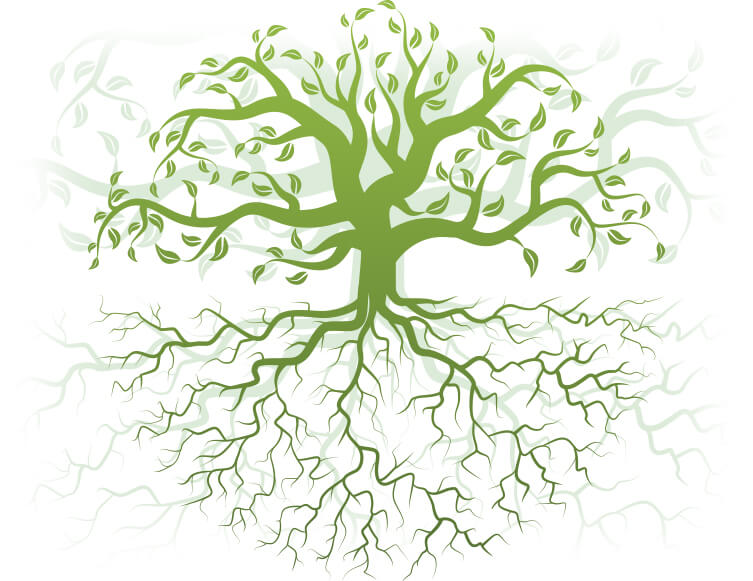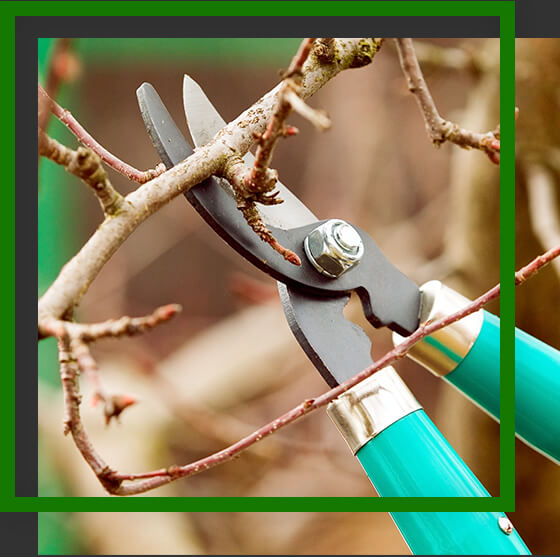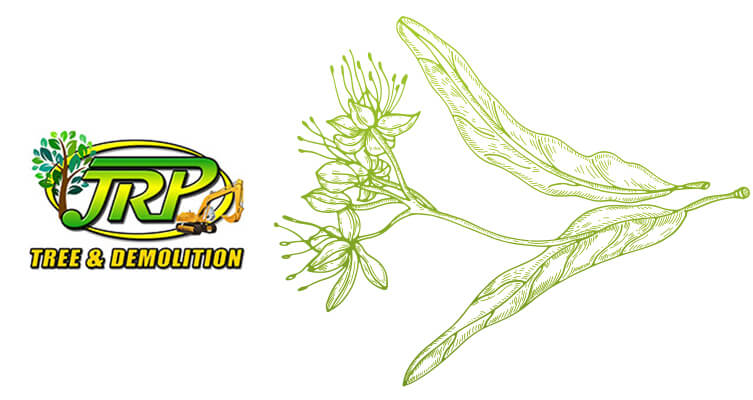If you have a sick or damaged tree on your property, it can be more than just an eyesore. A tree that is in poor health can be a liability. It’s important, especially with larger trees, to make sure that your tree is in excellent health to ensure that it won’t lose its limbs or fall over, which can be a serious danger to your home and passersby. Our advice: Care for your trees to keep them thriving, beautiful, and firmly rooted to the ground.
JRP Services has a certified arborist on staff to assist our clients with sick, damaged, and declining trees on properties here in Houston. Whether you have a tree problem and need a diagnosis, require a tree removal, or need a tree care plan, we can help you! We offer both one-time tree care services, as well as continual tree care plans to improve the health and appeal of the trees on your lot.
There are several ways to improve a tree’s health, and saving a tree from death is often a cheaper solution than cutting down that tree (plus, you’ll keep the value that your tree adds to your property). So call us, and we’ll focus on saving your tree with these techniques:
It’s crucial to water trees properly, and attaining the right balance can save a tree, while too much or too little water can send it to its demise. We’ll assess your trees current watering levels and adjust accordingly. Here are some signs of overwatering and underwatering that you may notice:
Signs of an overwatered tree: Overwatering your tree can cause a slew of issues. Keep an eye out for discolored bark, drooping limbs, yellowed or missing leaves, wilted leaves, and moss or fungus growth. You may also notice that you have standing water around your tree, or you may have soft, muddy soil around your tree’s base.
In addition, overwatered trees may begin to get root rot, which can attach the roots of your tree. Eventually, root rot and loose, wet soil can even cause your tree to topple over. So if you notice that your tree is beginning to lean, it’s best to check the soil. Consider having your tree cabled or braced to ensure that it doesn’t fall over (we provide tree cabling and bracing services too!).
The easiest way to gage whether your tree is receiving too much water is to test the soil. If your soil is spongy, soggy, and wet, or if you’ve noticed mold or fungus growing around the base of your tree, it’s likely that the soil is overwatered. You may not be able to tell if your tree is overwatered just by examining the surface of the surrounding soil — digging a few inches into the earth will give you a better gage of the amount of water in the soil around your tree’s roots.
Signs of an underwatered tree: Often, trees suffer from dehydration — and occasionally we’ll discover some form of obstruction (for instance, saplings, clay, or excess mulch) that is keeping water away from your tree’s roots.
Saplings can suck away all of the moisture that would otherwise supply the trunk and larger branches of a tree. Clay can actually prevent water from penetrating the surface of the soil surrounding your tree, which can cause dehydration. The same is true of thick mulch, or matted down thatch (often grass clippings or leaves) that has accumulated around the trunk of your tree. If you have a layer of clay that is keeping water from leaching into the soil, we may recommend that you till the earth around your tree with gravel or topsoil to provide better water penetration. If you have thatch around the base of your tree, it may just take a quick raking to bring moisture into the soil.
Take note, while too much mulch can keep water from reaching your tree’s roots, some mulch is a good idea. Mulch actually holds in moisture, providing a longer, more consistent supply of water for the soil beneath the mulch. Plus, mulch slowly leeches extra nutrients into the earth around your tree, which can actually improve the health of your tree. So, you should be wary that mulch may not be the culprit if you think that dehydration may be the issue. We recommend installing 2 to 3 inches of mulch around the bases of your trees to provide the right moisture content for your soil.
In addition, your tree may simply be getting too little water. While rain is common here in Houston, dry spells can leave your trees parched. In these circumstances, we’ll recommend a watering schedule, and it may be best to install a sprinkler or drip line to consistently provide water to your tree. Be wary that trees that are exposed to direct sun throughout the day are more likely to be underwatered. Also, newly planted trees may require a bit more water as their roots recover from transplantation and grow into the new soil surrounding the root ball.
Again, if you suspect that your tree is underwatered, the best test is to dig a few inches into the soil to check the moisture levels of the earth that surrounds the roots of your tree.
We’ll inject a fertilizing agent into your tree’s root structure if it appears to need more nutrients. Trees rely on soil for many of their nutrients, and we can revitalize the soils around your trees. Here are a few signs that you can look for which may indicate that your tree has poor soil nutrition.
Signs of poor soil: If you have poor soil surrounding your trees, your tree will show signs of decay. Be wary of little or no new growth on your tree. During the growing season, your tree should produce new growth, leaves, and blossoms or fruit (if you have a blossoming tree or fruit tree). On the other hand, if your tree is producing significant new growth, its an indication that your soil is properly balanced.
The foliage of your tree can be a good indicator of the pH-balance and nutrient content of your soil. If you have a tree with leaves that are yellowing or turning brown, the soil may be to blame. Also, if your trees are shedding leaves prematurely, the soil may require attention.
Be wary that lawn fertilizer isn’t designed to aid tree growth, and it may actually create an imbalance in the soil that is less suitable for your trees. If you use lawn fertilizer, it’s a good idea to check the pH balance of your soil after an application has had plenty of time to leech into the soil (you can check the soil a month or more after lawn fertilizer application to get a picture of the state of your soil).
If you suspect that the soil around your trees is unbalanced or nutrient deficient, we can check your soil. We’ll perform a nutrient content test and pH-balance test to see if there are any nutrients that are lacking or if your soil is too acidic or basic.


Trees need air! Properly aerated soil allows for better air and water flow to your root structure. Moreover, aeration aids in preventing or curing bacterial infections and mold. Here are a few indicators that the soil around your tree should be aerated.
Signs that your soil requires aeration: Keep an eye out for mold and thatch. If you have mold on the landscape surrounding your trees, water may be resting on the surface of your soil, instead of leaching into its roots. Plus, if mold is propagating around your trees, they may be liable to get root rot. Thatch can also accumulate and suffocate your tree’s roots. Matted leaves, grass clipping, and other materials can cause issues for your tree, but aeration can help to reduce the risk of root rot and watering problems.
Pruning dead or dying branches may save a tree’s life. Dead and dying branches can still soak up water and nutrients from the soil, and they’re drawing valuable resources from the rest of a healthy tree. Plus, dead branches are more susceptible to be attacked by mold and fungus which can spread to healthy portions of your tree. It’s best to lop off affected branches before they create further problems. You should have your trees trimmed if you notice any of the following signs.
Signs that your tree needs trimming: If you notice that your tree has unhealthy limbs, broken limbs, drooping limbs, discolored branches, or branches that no longer grow leaves, then your tree should be trimmed.
In addition, we recommend that you regularly have your trees trimmed once per year to improve their health. Regular trimming actually aids tree health. Trimming your trees ensures that the whole of your tree has sufficient light, nutrients, and water.


Per your request, we can monitor your tree’s health and take any requisite actions that may crop up. We also offer regular maintenance plans, including tree trimming, tree fertilization, and aeration.
If you’re ready to get started, feel free to reach out to us to schedule an appointment. We’ll give you a free quote for your upcoming project.
We are a family owned and operated company with nearly 30 years experience in Houston, Texas and the surrounding areas. We offer quality, customer service, competitive prices, and flexible scheduling.